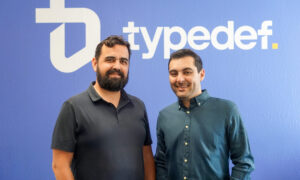AI-Driven Market Discovery: Success Stories and Expert Advice
Artificial Intelligence is revolutionizing market discovery, unveiling hidden opportunities across diverse industries. This article presents real-world success stories of AI-driven market insights, from financial education for Gen Z to solar maintenance markets. Drawing on expert knowledge, it offers practical advice for leveraging AI to uncover untapped business potential.
AI Uncovers Gen Z Financial Education Market
During the development of our AI-powered financial platform, we discovered an unexpected market segment that transformed our business approach.
While analyzing user interaction data with our AI tools, we noticed a significant number of Gen Z users were using our platform not just for investment decisions, but as an educational resource to understand complex financial concepts. This was surprising because we had initially targeted experienced investors aged 30-45.
Our AI system identified patterns in user queries that showed younger users were spending 3-4 times longer exploring educational content compared to making actual trades. They were particularly interested in understanding the relationship between news events and market movements.
This discovery led us to develop an AI-powered “Learn & Earn” feature, which combines financial education with practical investment guidance. The feature has now become one of our most successful products, with a 78% engagement rate among users aged 18-25.
For others looking to use AI for market discovery, I recommend focusing on unexpected patterns in user behavior rather than just conventional metrics. Look for anomalies in how users interact with your product—these often signal untapped opportunities.
Pay special attention to user queries and interaction patterns that don’t fit your assumed user profile. Our AI system flagged these educational queries as “outliers,” which turned out to be the key to identifying this new market segment.
Most importantly, validate AI insights with real user feedback. We conducted rapid user interviews with our Gen Z users, which helped us understand their true motivations and shaped our product development.
Fei Chen, Founder & CEO, Intellectia.Ai
Scraper Data Reveals Price Monitoring Segment
One of the most practical ways AI has helped me identify a new market segment was through analyzing how users interact with our scraper builder, specifically, the prompts they type in when creating custom scrapers.
Originally, we built the platform with developers in mind. Most of our messaging focused on general web scraping, automation, and large-scale data collection. But when we started reviewing prompt data using an in-house language model, we noticed something peculiar. More and more users were entering phrases like “monitor product prices,” “track competitor pricing,” or “check prices on Amazon.” These weren’t one-off requests. They showed up consistently and in clusters, across different users.
That pattern didn’t fit our assumptions. These users weren’t running massive extraction jobs. They were setting up small, repeatable scrapers to check prices across a handful of e-commerce sites. They were small business owners and e-commerce sellers looking for a fast way to track market pricing. This was a segment we hadn’t been targeting at all.
Once we identified that, we tested a few changes. We added scraper templates focused on e-commerce price monitoring. We updated landing page messaging to speak directly to that use case. We also created help docs tailored to non-technical users who wanted quick setup without writing code. Within weeks, usage from that group started climbing. It was a clear signal that this segment had been there all along; we just hadn’t seen it clearly until the AI surfaced the pattern in their behavior.
My advice to others trying to use AI for market discovery is to look closely at how users describe what they want to do. AI can process that kind of language at scale, and it’s often the exact place where unmet demand shows up first. The important thing here is to listen for repeated intent, even if it doesn’t match the audience you originally built for.
Cahyo Subroto, Founder, MrScraper
AI Identifies Hospital Workers as Sock Buyers
AI actually led us to discover an entirely new part of the market when we were busy figuring out our next crazy sock launch. Our software picked up on an unusual surge of midnight purchases from zip codes centered around hospitals. These were not impulsive buys. These were bulk orders from individuals clearly with exhausted feet and no patience for dull socks.
We pulled the data, and AI picked up on repeated purchasing habits of medical professionals. It identified words in reviews such as “12-hour shift,” “ICU,” and “compression socks that don’t make me sad.” We initially thought that someone was joking with us. But the trend continued. Nurses, ER personnel, and techs were buying in waves and writing reviews that read like a bedtime story with a shot of espresso.
That’s when we shifted gears. We adjusted our ad targeting, tailored messaging specifically for medical professionals, and even included customer photos from hospital hallways (all HIPAA-compliant, of course). The response was loud, loyal, and extremely comfortable.
This entire segment had found us before we found them. AI just connected the dots. The data sat there quietly until someone—or something—took a hard look and said, “This is not a coincidence.”
To anyone using AI for market discovery, I recommend treating it like a blunt friend with excellent pattern recognition. Do not feed it cherry-picked numbers or polished presentations. Give it real-world mess—cart abandonment reports, customer complaints, midnight orders, and support tickets with three typos. The weird data points are often the most valuable.
When AI flagged the hospital crowd, we didn’t hesitate. We ran with it, and now that segment is one of our fastest-growing. These customers are loyal, vocal, and not interested in socks that feel like cardboard. We would have missed all of it without a machine noticing that compression socks were flying off the shelves between 2:00 a.m. and sunrise.
That insight changed our marketing, boosted our revenue, and gave us an entirely new group of customers who deserve every bit of comfort we can stitch into a pair of socks.
Nate Banks, CEO, Crazy Compression
AI Analytics Expose Real Estate Staging Niche
One of the most surprising moments was when our AI-powered usage analytics revealed a new market segment we hadn’t explicitly targeted: real estate agents using our platform for DIY virtual staging. We originally built Paintit.ai for individual renters and homeowners, but we noticed repeat behavior patterns: multiple room uploads per session, preference for neutral palettes, and furniture choices aligned with resale appeal.
By cross-referencing user actions with anonymized behavioral clustering, AI helped us spot patterns humans may have missed—not just who was using the tool, but how and why. This led us to create a “Staging Mode” prototype tailored to listing optimization, which quickly gained traction.
My advice? Don’t just use AI to analyze who’s buying—use it to understand why and how they’re engaging. Segment by behavior, not just demographics. Let the patterns tell the story, then test quickly and iteratively. That’s where real market insights live.
Yulii Cherevko, CEO & Co-owner, Paintit.ai
Clustering Algorithms Reveal Educational Market Segment
One interesting case involved using clustering algorithms on customer interaction data—website behavior, support tickets, purchase patterns, and survey text. The goal wasn’t defined upfront as “find a new market segment”; it started as customer insights. However, the AI model grouped a set of users showing high engagement with one lesser-promoted feature. Upon further investigation, it turned out they were using the product in a completely different context than intended—specifically in the education sector, which hadn’t been a focus area at all.
The team built a small landing page targeting that niche use case and ran a test campaign. Click-through rates (CTR) and demo sign-ups from that segment outperformed the main audience.
For anyone looking to use AI for market discovery:
1. Don’t start with assumptions. Let the data speak—unsupervised learning can surface non-obvious patterns.
2. Use clean, cross-channel data—behavioral + transactional + qualitative.
3. AI won’t give a full narrative. It’ll point to a pattern. The real insight often comes from interpreting that signal through a business lens.
Vipul Mehta, Co-Founder & CTO, WeblineGlobal
AI Chat Sparks Procurement Specialist Discovery
Yes, this happened while I was working on an AI contract review software. We originally positioned the product for lawyers and business owners. However, after running several tests, the results weren’t strong enough. I began to suspect we were targeting the wrong segment. I wanted to brainstorm with the team, but no one was available at the time. So instead of waiting, I decided to brainstorm with an AI chat.
I asked the AI which professionals might need an AI contract review tool. It provided a long list—some options were off, but one stood out: procurement specialists. That triggered a memory—I had recently conducted a demo for a UK-based consulting firm that focused on procurement. That was the spark.
This idea led to a new hypothesis, product adjustments, and ultimately, more sales. AI didn’t give me the perfect answer immediately—but it pushed my thinking in the right direction.
My advice: don’t underestimate AI’s potential in shaping your marketing strategy. Sometimes, all you need is a new perspective—and AI can provide that.
Nick Trenkler, CMO, Bagoodex
AI Analysis Uncovers Older Wellness App Users
AI helped us uncover a goldmine of untapped leads in the wellness tech space, almost by accident. We were using AI to analyze user behavior across a few health-focused apps we’d built. The pattern? A surprising amount of engagement was coming from users over 40 in suburban areas, looking for mindfulness and habit-tracking features—not the 20-something, tech-savvy fitness enthusiasts we originally designed for.
That insight flipped our whole approach. We leaned into designing for that unexpected segment—cleaner UX, bigger fonts, simplified workflows—and it opened up a totally new demographic for client acquisition. Suddenly, B2B wellness startups were calling, asking how we nailed usability for older users. AI didn’t just show us the market—it shaped the product and the pitch.
My advice? Don’t just use AI for the surface stuff like keyword research. Dive deep into behavioral data, patterns in user feedback, and clustering tools that reveal who’s actually engaging with your product—not just who you think your customer is. Then have the courage to follow where the data leads, even if it breaks your original assumptions. That’s where the opportunity lies.
Daniel Haiem, CEO, App Makers LA
Support Tickets Reveal HR Gift-Giving Segment
One of the most unexpected ways we identified a new market segment was by analyzing our customer support tickets. We started seeing repeated inquiries from HR teams at mid-sized tech companies, asking for more flexibility in sending bulk gifts for employee recognition. At the time, most of our messaging and product features were geared toward sales and customer success teams for client gifting.
But thanks to AI tools that helped categorize and cluster support feedback, it became clear there was an underserved segment: HR professionals looking for something that could handle birthdays, anniversaries, and even “just because” moments at scale. That insight led us to develop specific features tailored to them, and honestly, it’s now one of our fastest-growing user groups.
My advice to others is that if you’re thinking about using AI for market discovery, don’t overlook customer feedback. It’s not just noise; it’s gold when analyzed correctly.
AI Identifies Blockchain-Curious Manufacturers
One of the most impactful uses of AI was during a campaign where we sought to uncover a new market segment for a blockchain startup. The goal was to identify underserved customer segments that would benefit from blockchain solutions but had not been targeted by traditional marketing efforts.
We utilized AI-powered predictive analytics and machine learning tools to analyze a variety of data sources: social media activity, customer behaviors, search trends, and even demographic insights. The AI system identified an emerging segment: mid-sized manufacturers exploring blockchain for supply chain transparency but were not yet fully adopting it. This segment was previously overlooked, but AI’s real-time data processing and predictive capabilities revealed an opportunity.
What made the AI insights valuable was not only identifying the segment but also providing behavioral signals—such as specific pain points these manufacturers were facing. The AI used natural language processing to analyze online conversations and customer feedback, pinpointing unmet needs like traceability and efficiency in supply chains. This allowed us to craft a highly relevant marketing message that addressed these concerns, setting our client apart in a competitive landscape.
Advice for others using AI for market discovery:
1. Diversify your data: AI thrives on a broad range of inputs, so include both traditional and non-traditional sources (social media, forums, etc.) to gain deeper insights.
2. Leverage predictive analytics: Use AI not only to analyze past trends but also to predict future behavior. This helps uncover emerging needs and market segments before they become mainstream.
3. Refine based on real feedback: Always validate AI findings with real-world testing. AI models improve as more data is fed into them, so continuous refinement is key.
4. Target precisely: Once a new segment is identified, use AI to understand how they engage with content, then tailor your messaging to meet their unique needs.
By combining AI’s ability to process and analyze vast amounts of data with human intuition and strategy, you can uncover market segments that may have otherwise gone unnoticed—ultimately leading to more efficient customer acquisition and higher ROI for your marketing efforts.
Zeev Wexler, CEO, Wexler Marketing
AI Exposes Fractional COOs as Key Users
We conducted behavior-based clustering on user session data from a product in the HR tech space. Our focus was on retention. However, the AI uncovered a cluster that didn’t match any of our target personas. These users weren’t recruiters or hiring managers. They were fractional COOs using the platform for workforce planning. We hadn’t built for them, marketed to them, or even knew they were there. But they logged in daily, used advanced reporting features, and stayed longer than anyone else.
This insight reshaped our roadmap. We launched a tailored experience with dashboards and workflows specific to operations leaders. Within one quarter, they became the highest LTV cohort and opened a new B2B pipeline we hadn’t explored. None of this came from a survey. It came from how they used the product.
If you’re using AI for market discovery, start with real usage data. Map what users do, not what you think they are. AI models trained on product behavior, search patterns, or support tickets will surface segments you didn’t know existed. That’s where growth lies.
Also, don’t outsource the thinking. AI flags patterns. You decide what matters. Context beats prediction. Your job is to spot traction where no one’s looking and move quickly when you find it.
The best segment you’ll reach this year might already be paying you. You’re just not speaking their language yet.
Steven Mitts, Entrepreneurial Coach, Steven Mitts
AI Reveals Demand for Automation Technicians
We’ve embraced AI-powered labor market analysis tools to help us uncover fresh opportunities. These tools aggregate data from job boards, hiring trends, and workforce shifts—far more than any manual research could ever capture.
One pattern stood out: a surprising uptick in demand for automation technicians and robotics maintenance specialists in midsize packaging and food production facilities across the Midwest. These weren’t companies we had traditionally served, but the hiring velocity and wage data made it clear: there was a talent bottleneck forming, and no one was paying close enough attention.
So, we tested the waters. We reached out to a few companies in that space, and within weeks, we landed our first client in the sector. That foothold opened the door to several similar contracts, and it’s now one of our fastest-growing verticals.
My advice to others looking to use AI for market discovery? Don’t just ask AI for “what’s hot.” That’s basic.
Instead, look for anomalies. Sometimes the real opportunities are hidden in the shifts that haven’t made the news yet.
And most importantly, be curious. AI won’t replace your business acumen, but it can absolutely amplify it—if you’re willing to dig a little deeper and act on what you find.
Linn Atiyeh, CEO, Bemana
AI Research Uncovers Fractional CMO Market
We used AI-powered research to explore the emerging demand for fractional CMOs, and it helped us uncover a clear, underserved market segment. We wanted to understand which businesses would benefit most from high-level strategic marketing leadership without the cost of a full-time executive. Using AI tools, we analyzed everything from hiring patterns on LinkedIn to content consumption trends, funding stages, and industry-specific headcount data.
The insights were powerful: small to midsize companies in B2B tech, healthcare, and professional services were consistently hitting growth ceilings without senior marketing leadership. These weren’t just companies without CMOs—they were companies unaware of the option of fractional leadership. That gave us a messaging and education opportunity, not just a sales one.
My advice to others using AI for market discovery is this: don’t settle for surface-level data. The value of AI is in its ability to synthesize across layers of input—behavioral, demographic, financial, and contextual (that is, use deep research). In other words, you have to, pardon the pun, dig deep. It’s no different from traditional research in that regard: quality comes from depth, not speed. Let AI help you see patterns, but bring human judgment to interpret what actually matters. That’s where strategy begins.
Phillip Mandel, CEO, Mandel Marketing
AI Analysis Reveals IT Helpdesk Opportunity
We recently used AI to dive deeper into customer behavior and uncovered an unexpected market segment. While we had a solid understanding of our main users, the AI analysis revealed a smaller group: IT help desks in mid-sized businesses. They weren’t making large purchases but were heavily using our queue management features to streamline their internal support processes.
This insight allowed us to shift our marketing focus and tailor our product strategies to better meet the unique needs of this segment, which led to a noticeable increase in conversions.
If you’re using AI for market discovery, my advice would be: don’t just focus on the obvious segments. Let the data guide you to hidden opportunities—often, it’s the smaller, unexpected groups that bring the most value.
Oliver Vesi, Chief Revenue Officer, Qminder
AI Scans Uncover Solar Maintenance Market
A while back, we used AI tools to scan market trends across industry reports, social media, and forums. One trend that stood out was a growing demand for digital solutions in the solar energy maintenance sector, something we hadn’t seriously considered before. These businesses were facing challenges that matched exactly what our platform solves: managing field teams, scheduling, and tracking maintenance work.
We dug deeper, talked to a few companies in that space, and realized it was a great fit. That’s how we ended up expanding into a whole new vertical. My advice to others is simple: use AI not just to analyze your current market, but to listen to the outside world. The right tools can help you spot shifts in demand and buyer behavior early, before your competitors do. Just be ready to act on what the data shows, even if it means exploring new territory.
Yogesh Choudhary, CEO & Marketing Expert, Maintenance Management
AI Tracks Construction Firms’ Website Behavior
We used AI to track how people were interacting with different parts of our website, what pages they stayed on, what they clicked, and how often they returned. One pattern stood out: visitors from smaller construction firms were spending a lot of time on our fleet and job management pages. They weren’t a group we had targeted before, but their behavior told us they were clearly interested. That insight helped us build tailored messaging and landing pages just for them, and it brought in a steady stream of new leads we hadn’t been reaching before.
If you’re thinking about using AI for market discovery, my advice is don’t just focus on demographics, look at real behavior. AI tools can surface patterns you’d never notice manually. Set clear tracking goals, and always be ready to test what you find with new content or offers. Sometimes, your best audience is already knocking; you just haven’t noticed yet.
Sara Cooper, Director of Web Strategy, BigChange
AI Analysis Reveals Athletic Grooming Market
We recently worked with a men’s hair care brand that was stuck in an overcrowded “luxury barbershop” segment. This positioning didn’t match their boxer-barber founding story. Using AI, we analyzed their product formulations at a molecular level, identifying functional benefits that traditional market research had missed. The AI revealed that their unique ingredients delivered superior performance under physical stress: sweat resistance, clean rinse-out, and skin recovery properties. This discovery opened a completely untapped ‘performance grooming’ segment for athletes and active professionals.
Our advice: don’t just use AI to analyze what competitors are saying. Have it dissect what your product actually does differently, then build your position from those technical truths rather than market conventions.
Hayden Bond, Owner Plate Lunch Collective, Plate Lunch Collective
AI Metrics Expose Senior Home Improvement Segment
We identified a surprising opportunity in the mature homeowner segment after implementing AI analysis on our engagement metrics. The algorithm spotted patterns we’d missed, revealing this audience was consuming our home improvement content at three times the rate of our target demographic, but with virtually no conversion strategy in place.
By deploying GPT for sentiment analysis across social listening data, we could understand their specific pain points around renovation financing and contractor reliability that weren’t being addressed elsewhere. This immediately informed a microsite strategy that generated 140% more qualified leads within 90 days.
For companies exploring AI for market discovery, I’d recommend starting with existing data before investing in new collection methods. The insights are often already hiding in your analytics, CRM, and social engagement metrics—AI just helps connect the dots humans miss. And critically, ensure you validate AI insights with actual customer conversations before pivoting resources. The technology excels at pattern recognition but still needs human judgment to separate meaningful opportunities from statistical noise.
Sk Sahin, SEO Specialist, Boring Marketing
AI Listening Tools Uncover EV Detailing Market
It wasn’t a sudden epiphany, more like a slow dawning realization thanks to some clever AI tools. We were using a platform to analyze online chatter—social media, forums, car blogs—basically anywhere people talked about car care. Initially, we set it up to track mentions of our brand and competitors, typical social listening stuff.
But then we expanded its scope, asking it to look for broader trends in car care conversations. That’s when something interesting popped up: a growing segment of EV owners expressing frustration with detailing their cars. Standard products designed for combustion engines weren’t ideal for the unique materials and finishes of electric vehicles, and they were worried about voiding warranties by using the wrong stuff.
I’ll be honest, we hadn’t been paying much attention to the EV market. We thought it was too niche, too early. The AI data, however, painted a very different picture. This wasn’t a tiny fringe group; it was a burgeoning market segment with specific needs and concerns.
This insight prompted us to research further. We talked directly with EV owners, attended EV shows, and even partnered with a local Tesla club. The AI had pointed us in the right direction, but it was the real-world interaction that confirmed the opportunity.
The result? We developed a dedicated line of EV detailing products—ceramic coatings formulated for sensitive finishes, interior cleaners safe for vegan leather, even specialized tire dressings that don’t interfere with regenerative braking sensors. It was a gamble, but it paid off big time. The EV detailing line is now one of our fastest-growing segments.
My advice for using AI for market discovery? Don’t just ask it to tell you what you already know. Use it to broaden your horizons, to explore areas you haven’t considered. Think of AI as a scout, not a general. It can help you identify promising territories, but you need to send in your own troops (i.e., real-world research and customer interactions) to confirm the intel and develop a winning strategy. And remember, data is just data. It’s the human element—the ability to interpret that data, connect with real people, and understand their needs—that truly unlocks the power of market discovery.
David Bui, Director & Business Specialist, Schmicko
AI Detects Small Architecture Firms’ Needs
Our AI analytics system identified an unanticipated target market that we had not included in our initial plans. Through machine learning analytics of platform-wide purchasing data and support patterns, our firm observed small architecture firms adopting our products for new, unintended reasons. These target businesses appreciated both our solutions’ operational functionality together with customizable visual elements, even though these aspects had never been emphasized in our initial presentation. The learned insights led us to readjust our product line as well as customize our message and build customized design elements for better serving this specific audience.
My recommendation for anyone implementing AI for market discovery begins with data quality along with precise investigation questions. The effectiveness of AI depends entirely upon the information and goals that users supply to the system. True market analysis requires merging sales information with user behavior data alongside support data so you can experience the full picture. Clustering methods together with predictive modeling techniques can detect abnormal patterns through data analysis. Act swiftly on all discovered insights that come from your work. Strategic changes must result from valuable discoveries through product modifications, campaign development, or complete market position evaluation.
Matthew Lentz, Owner, Daylight Concepts
Related Articles
- Data-Driven Success: How AI and Analytics Are … – TechBullion
- Why 2025 Belongs to AI-Driven Startups in The World of Trading
- Morpher Labs Introduces Morpher AI to Simplify Market Analysis for All



































